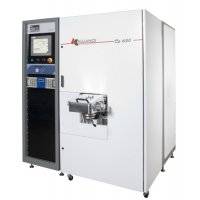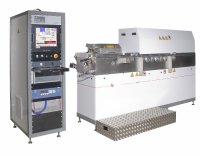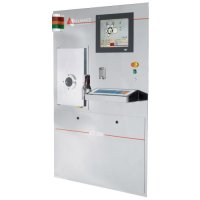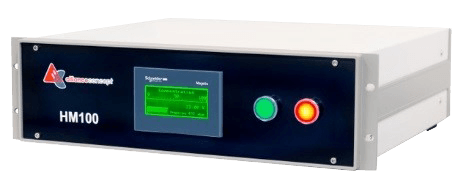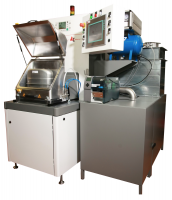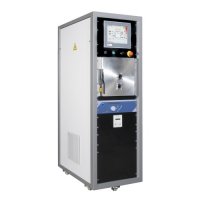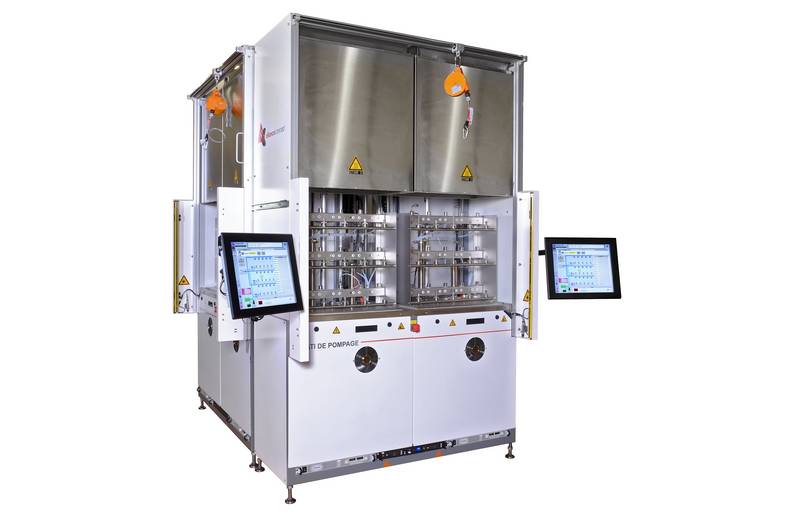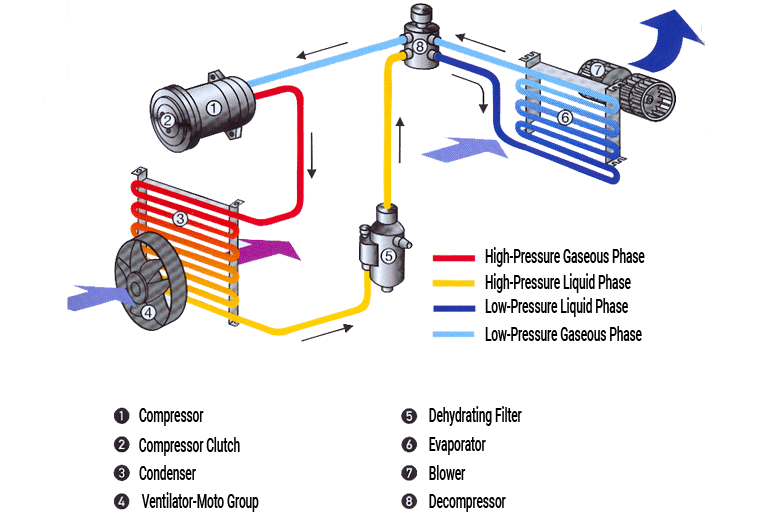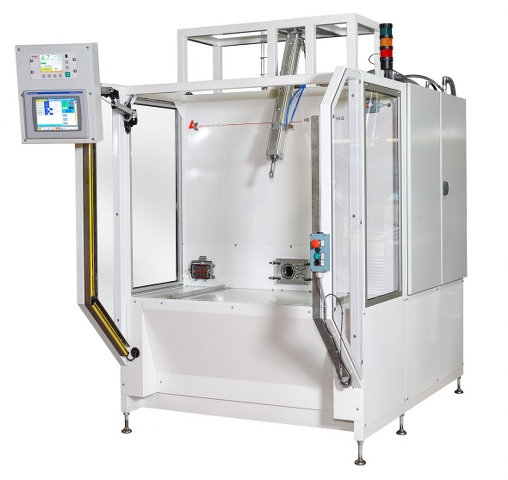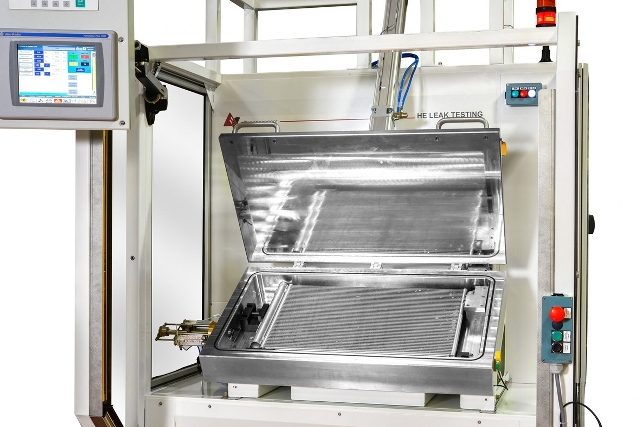Leak Testing for Cars’ Air Conditioning System, Condensers and Evaporators
Air Conditioning System for cars is based on a closed-circuit principle in which a refrigerant circulating gas is present (R134, CO2, etc.). This gas undergoes thousands of cycles of compression and expansion to lower the air temperature in the car.
In order to do so, some key elements are requested. A car air conditioning system works according to the following principle:
- A compressor compresses the refrigerant gas. The refrigerant, whose pressure has been high, becomes hot.
- The condenser is therefore supplied with high-pressure hot refrigerant gas.The refrigerant gas compresses itself by passing through the condenser (becomes liquid at constant pressure) and cools itself down with the flow of external air forced by an electric fan.
- The liquid cooling gas goes through a regulator which sharply lowers the pressure to 2 bar, more or less.Part of the cooling liquid vaporizes, resulting in a decrease in the temperature of the cooling liquid.
- As it goes through the evaporator, hot air ends up vaporizing the liquid part of the refrigerant causing air cooling (from which is extracted a great part of its moisture which condenses on the evaporator). This cold air is then injected into the system and the refrigerant gas returns to the compressor for a new cycle.
In order to ensure the tightness of evaporators and condensers, first level automotive suppliers have relied on our know-how in the field of leak detection with Helium and H2 tracer gases, for more than 25 years.
Alliance Concept is a French manufacturer of Helium, H2 leak detection equipment.
This semi-automated single station detection equipment has been developed to meet ergonomic requirements and an industrial logic, ie : to produce efficiently, with an optimized cycle time, at a high production rate.
Condensers or evaporators are globally detected under vacuum. They are manually inserted into a chamber under vaccum. The part is pressurized to several bars with helium which will escape in case of possible leaks.
The helium is quantified by the leak detector (a mass spectrometer calibrated on the helium) which is connected to the detection chamber.
To allow the equipment to be even more economically attractive, an interchangeable chamber system has been developed. It is indeed possible to remove one chamber in order to place another chamber, and test any type of parts’ references with only one single equipment!
Evaporators and Condensers Leak Detection System Technical Data
- Ergonomic single station system
- Interchangeable chambers system for the use of multiple-references
- Global under vacuum detection with tracked testing using a sniffing sensor and a dedicated cycle
- Pass-by detection to check that the parts to be tested are not blocked
- Primary pumping of the parts to be tested
- Secondary pumping of the vacuum chambers
Double Chamber Condensers and Evaporators Leak Detection Solution
A car air conditioning system is a complete set of several key elements. One of its most important characteristics is indoubtedly its tightness to the environment. Indeed, contact with the air moisture and contact with the cooling liquid turning into ice, would block the regulator and damage the compressor.
For more than 25 years, Alliance Concept supports the automotive industry in its rigorous quality system and guarantees leak detection solutions adapted to your specific needs by using Helium and H2 tracer gas…
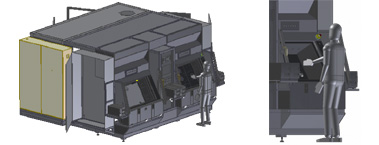
This system provides two vacuum chambers for the testing of two products in global mode. While one product is being tested, you can simultaneously unload the other tested product and benefit from this operation during the down-time.
To allow you to test several types of parts without having to switch from one equipment to another, Alliance Concept provides you a versatile helium detection system in which it is possible to load the various parts of an air conditioning system: evaporators, condensers, compressors, heaters, etc.
Double Chamber Leak Detection System Technical Data:
- Bi-post system to benefit from down-time operations
- Test in global mode (chamber)
- Possibility of sniffing mode detection with a “RLD” sensor (Long Distance Sniffing)
- Pre-emptying and secondary pumping of the detection chamber
- Cycle Time <60s
 +33 (0)4 50 57 93 85
+33 (0)4 50 57 93 85



